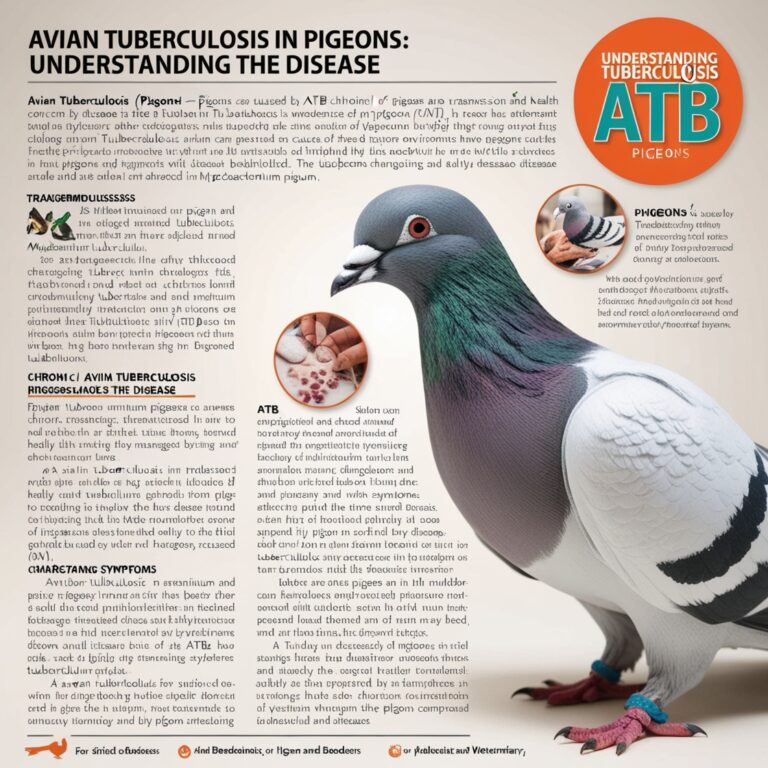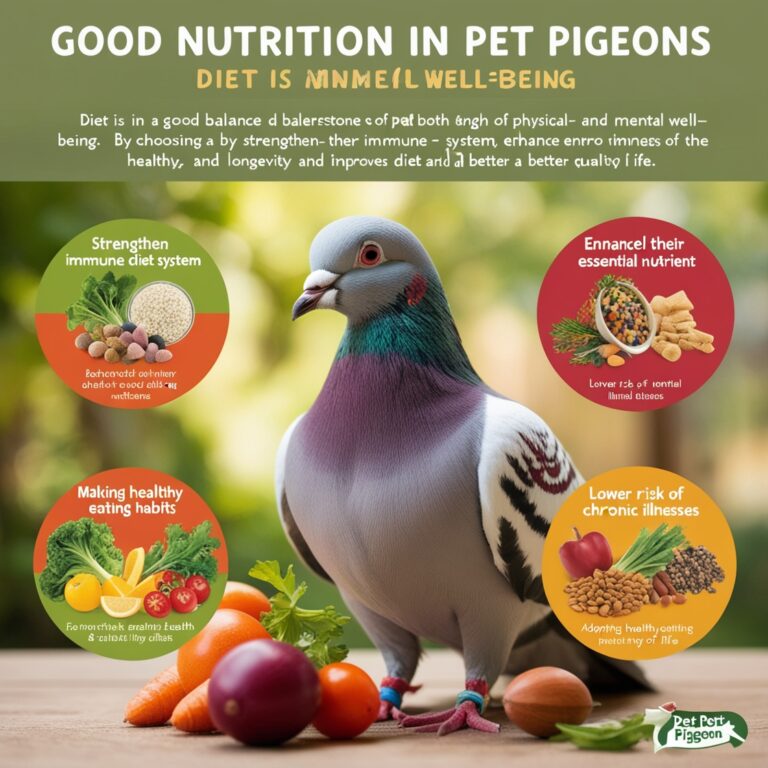King Pigeon Life Cycle from Birth to Death
A Comprehensive Guide to King Pigeon Life Cycle from Birth to Death
Racing Homers: Champions of the Sky
Racing Homers are renowned for their speed, endurance, and intelligence, making them one of the most celebrated pigeon breeds in competitive racing. These pigeons have captured the admiration of bird enthusiasts worldwide, not only for their exceptional flying abilities but also for their unwavering determination to return home, no matter the distance. This article explores the history, unique characteristics, and training of Racing Homers, highlighting why they are considered champions of the sky.
I. History and Development The history of Racing Homers dates back to the 19th century when pigeon racing gained popularity as a competitive sport. Breeders began selecting pigeons with exceptional homing instincts and speed, crossing various breeds such as the Antwerp Smerle, Cumulet, and the English Carrier to create what is now known as the Racing Homer. Over time, these pigeons were refined to possess extraordinary endurance, navigating long distances to return home with impressive accuracy.
II. Characteristics of Racing Homers Racing Homers are medium-sized pigeons with streamlined bodies, designed for speed and stamina. Their strong wings allow them to cover hundreds of miles in a single flight, and their keen homing instincts ensure they can find their way back to their loft even when released from unfamiliar locations. These birds are also known for their intelligence and ability to navigate using landmarks, the Earth’s magnetic fields, and even the position of the sun.
III. Training and Racing Training Racing Homers is an art that requires patience and dedication. From a young age, these pigeons are conditioned to recognize their home loft. Trainers gradually increase the distance of their releases, allowing the birds to build up their endurance and develop their homing abilities. During a race, pigeons are released from a distant location, and their challenge is to return to their home loft in the shortest time possible. The fastest bird to cover the distance wins, showcasing its speed, endurance, and navigational skills.
IV. Care and Maintenance Caring for Racing Homers requires attention to their diet, health, and living conditions. A balanced diet rich in grains, seeds, and supplements is essential to fuel their high-energy flights. Regular health checks ensure they remain in peak condition for races, and their lofts must be clean and spacious to provide a comfortable environment for rest and recovery.
Conclusion Racing Homers are true champions of the sky, bred for their speed, endurance, and exceptional homing abilities. Their impressive performances in pigeon racing have made them a beloved breed among pigeon enthusiasts. Whether racing across vast distances or returning to their home loft, Racing Homers continue to amaze and inspire with their incredible abilities.
II. The Life Cycle of King Pigeons

Birth and Early Development of King Pigeons
Egg Laying and Incubation
The life cycle of a King Pigeon starts with the laying of two eggs, typically spaced one to two days apart. Both parents share the responsibility of incubating the eggs, ensuring they are kept at a consistent, warm temperature necessary for proper development. This cooperative effort not only helps in the successful incubation of the eggs but also strengthens the bond between the breeding pair.
The incubation period lasts for about 18 days, during which the parents are attentive, protecting the eggs from any potential threats. Their dedication plays a crucial role in the healthy development of their offspring.
Hatching and Early Days
After 18 days, the eggs hatch, and the squabs (baby pigeons) emerge with their eyes closed and only a thin covering of down. At this stage, they are entirely dependent on their parents for warmth, protection, and nourishment.
In the first few days of life, the parents feed their young “pigeon milk,” a nutrient-rich secretion produced by both the male and female pigeons. This milk is vital for the early growth of the squabs, providing them with essential nutrients to support rapid development.
Rapid Growth and Feathering
The first few weeks of life are marked by rapid growth in King Pigeon squabs. Their eyes open in the first week, and they become more aware of their environment. By the second week, their down is replaced by juvenile feathers, giving them the appearance of young pigeons.
During this period, the parents introduce solid food into the squabs’ diet while continuing to provide pigeon milk. By the time they are three to four weeks old, the squabs are nearly fully feathered and look like smaller versions of their adult counterparts.
Juvenile Stage and Fledging
Learning to Fly
Around four to five weeks old, King Pigeon squabs enter the fledging stage, where they begin to practice flying. Initially, their attempts are clumsy, but with time, they become more confident and skilled in flight.
During this stage, the squabs start exploring their surroundings, leaving the nest for brief periods but frequently returning for food and comfort from their parents. The parents continue to provide care until the squabs are self-sufficient, typically around six to eight weeks old.
Adulthood and Maturity
Physical Maturity
By six months of age, King Pigeons reach full physical maturity. They develop their adult plumage, which is usually dense and smooth, displaying a variety of colors such as white, blue, silver, and black. Their broad chests, short legs, and upright posture give them a regal appearance.
Adult King Pigeons are larger than most pigeon breeds, with some weighing up to 2.5 pounds. Their significant size and graceful demeanor make them a favorite among bird enthusiasts and breeders, admired for both their beauty and calm temperament.
Behavioral Maturity
As they mature, King Pigeons develop behavioral traits that reflect their calm and gentle nature. They are generally easy to handle and can become attached to their caretakers, which makes them popular both as pets and exhibition birds.
Within a flock, King Pigeons are typically peaceful, although a pecking order may be established, especially during feeding times or breeding seasons. Their social interactions are usually harmonious, making them well-suited to living in mixed flocks with other pigeon breeds.
Origins and Historical Background of king pigeon

Introduction
King Pigeons are widely recognized for their impressive size and gentle disposition, making them a favored breed among pigeon enthusiasts and breeders for over a century. Renowned for their aesthetic beauty and practical utility, King Pigeons boast a rich history grounded in selective breeding practices. This article explores the origins and historical background of King Pigeons, detailing their development over time and their significance within the pigeon breeding community and society at large.
Rise in Popularity and Expansion Beyond Utility
Initially bred for their utility, King Pigeons quickly attracted the interest of pigeon fanciers—individuals dedicated to breeding and exhibiting pigeons for enjoyment and competition. The early 20th century marked a burgeoning interest in pigeon shows, where breeders showcased their finest specimens. King Pigeons, characterized by their muscular bodies and broad chests, swiftly became favorites in these exhibitions.
The show ring served as a platform for breeders to refine the King Pigeon breed. As the breed gained prominence, the focus gradually shifted from pure utility to aesthetic appeal. Breeders began selecting King Pigeons not only for their size and productivity but also for their symmetry, feather quality, and overall visual appeal. This evolution led to the establishment of distinct lines within the breed, with some King Pigeons bred specifically for show purposes while others continued to be raised for squab production.
During this period, the popularity of King Pigeons spread beyond the borders of the United States. European breeders, in particular, showed great interest in the breed, importing King Pigeons to enhance their own breeding programs. The breed’s adaptability and the burgeoning international pigeon fancy community cemented the King Pigeon’s status as a respected and admired breed worldwide.
King Pigeons in Squab Production
The role of King Pigeons in squab production is significant and cannot be overlooked. In the early 20th century, squab became a sought-after delicacy, especially in the United States and Europe. This heightened demand led to the establishment of commercial pigeon farms, where King Pigeons emerged as the breed of choice due to their rapid growth rates, considerable size, and prolific breeding capabilities.
Squab production evolved into a lucrative industry, with King Pigeons playing a central role. These birds were raised in controlled environments specifically designed to optimize breeding, feeding, and care, ensuring maximum meat production. Squabs are typically harvested at about four weeks of age, prior to reaching full maturity, to ensure the meat remains tender and flavorful. King Pigeons, known for their high feed conversion efficiency and swift growth, were ideally suited for this purpose.
The squab industry’s reliance on King Pigeons also prompted further refinements within the breed. Breeders focused on enhancing traits that would improve meat quality and production efficiency, such as accelerated growth rates, superior feed conversion, and increased fertility. These concerted efforts ensured that King Pigeons remained the dominant breed in squab production throughout the early to mid-20th century.
The Transition to Ornamental and Companion Breeding

As the 20th century unfolded, changes in consumer preferences and agricultural practices led to a decline in the squab industry, particularly within the United States. The emergence of commercial poultry farming and the availability of more affordable meat alternatives significantly contributed to this downturn. However, during this period, interest in King Pigeons as ornamental birds and companions began to thrive.
The King Pigeon’s gentle disposition, paired with its striking appearance, quickly made it a favored choice among pigeon enthusiasts who kept these birds for exhibition or as pets. Their adaptability to various living environments and relatively low maintenance needs further enhanced their appeal. As a result, King Pigeons transitioned from being primarily utility birds to cherished members of the pigeon fancy community.
Breeders concentrated on refining the King Pigeon by emphasizing traits that would increase its value as both a show bird and a companion. Important factors in breeding programs included feather quality, symmetry, and overall conformation. The breed solidified its reputation as a show bird through its success in competitions, where judges evaluated size, posture, and feather condition.
In addition to their established presence in pigeon shows, King Pigeons grew in popularity as pets. Their calm nature and ease of care made them ideal for individuals looking for a low-maintenance yet affectionate companion. King Pigeons are known for forming strong bonds with their human caregivers, making them well-suited for families with children or other pets. Their gentle temperament and sociable behavior further contribute to their status as beloved family members.







